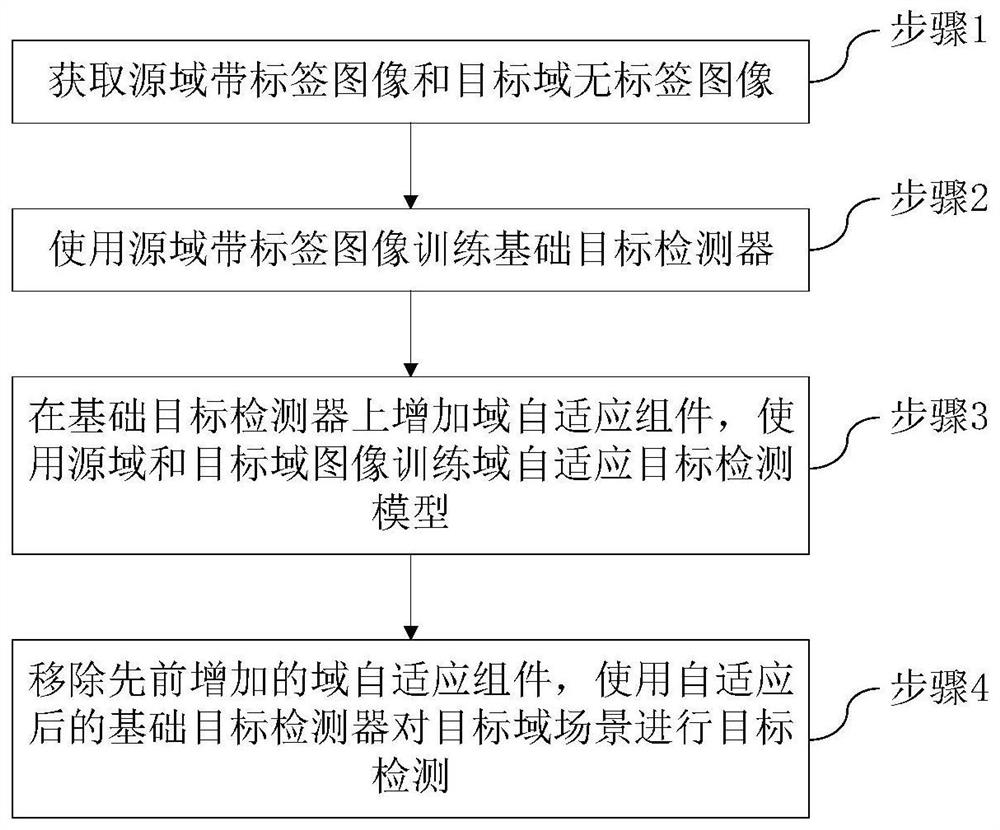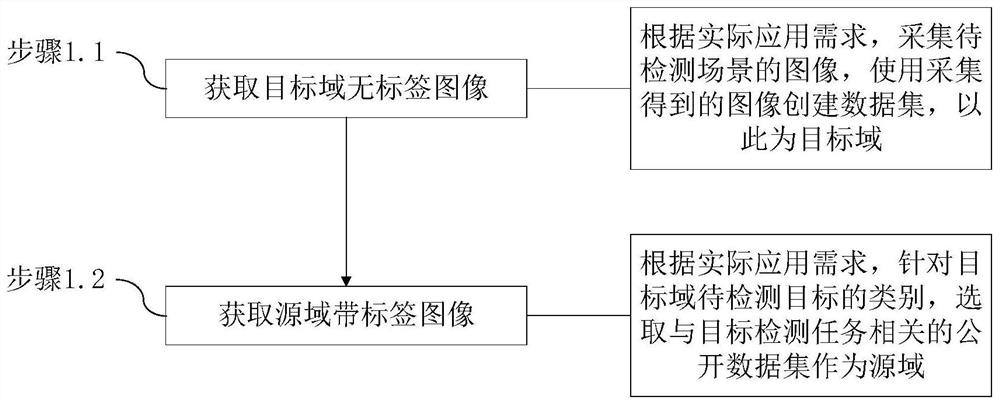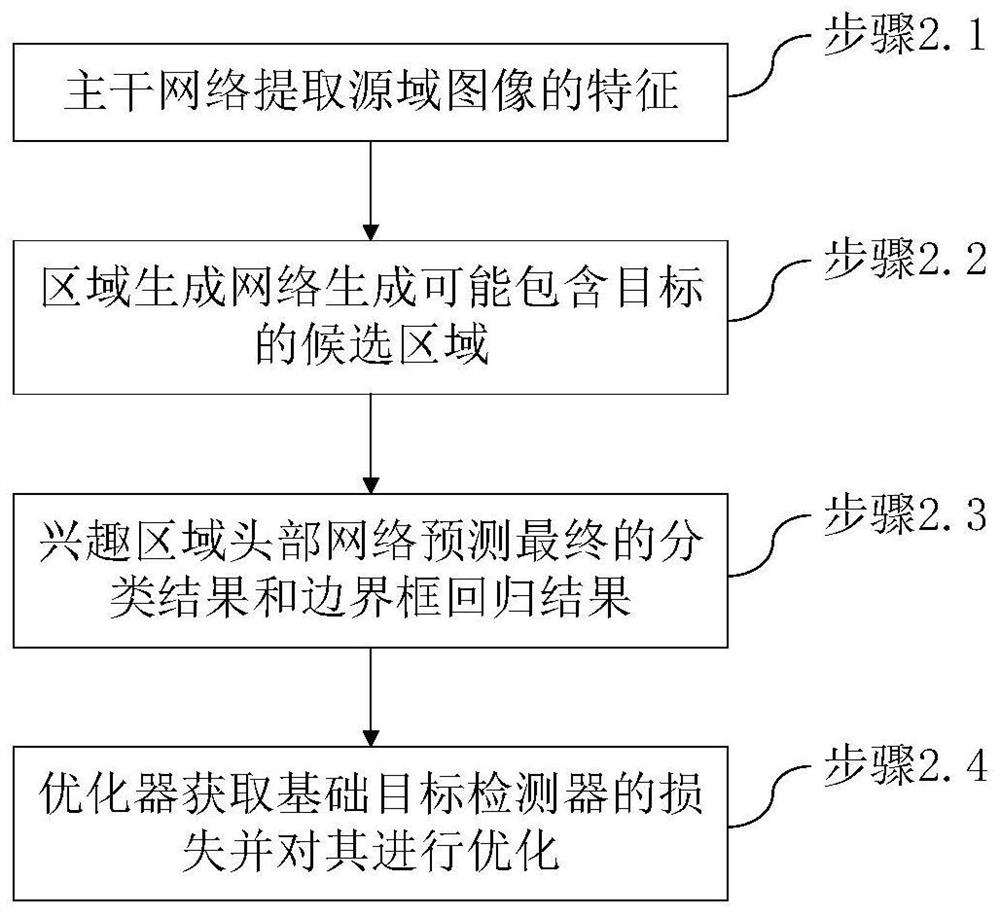Domain adaptive target detection method and system considering category semantic matching
A domain-adaptive, target detection technology, applied in the domain-adaptive target detection field considering category semantic matching, can solve problems such as category semantic mismatch, unreasonable strategy, damage to cross-domain target detection model performance, etc., and achieve consistency , the effect of reducing the effect of pseudo-label noise
- Summary
- Abstract
- Description
- Claims
- Application Information
AI Technical Summary
Problems solved by technology
Method used
Image
Examples
Embodiment 1
[0105] Step 1. Obtain labeled images in the source domain and unlabeled images in the target domain.
[0106] In step 2, a base object detector is trained using source-domain labeled images.
[0107] Step 3, add a domain adaptive component to the basic object detector, and use the source domain and target domain images to train the domain adaptive object detection model.
[0108] Step 4, remove the previously added domain adaptation component, and use the adapted basic target detector to detect the target domain scene.
[0109] Further, the source domain labeled image and the target domain unlabeled image obtained in step 1 are divided into the following steps, such as figure 2 As shown, its specific expression is:
[0110] Step 1.1, obtain unlabeled images of the target domain. According to the actual application requirements, collect images of the scene to be detected, and use the collected images to create a data set as the target domain. Since these images have not be...
Embodiment 2
[0179] The present invention also provides a domain adaptive target detection system considering category semantic matching, such as Figure 9 As shown, the system includes:
[0180] Module 1, image storage module. The image storage module saves a variety of public datasets for target detection research, which contain images and corresponding labels in specific scenes. In addition, the image storage module also stores the collected images of the scene to be detected. According to the actual application requirements, one of the public datasets can be selected as the source domain, and the collected images can be used as the target domain.
[0181] Module 2, pre-training module. The domain-adaptive object detection model is composed of a basic object detector, a global feature discrimination component, a pseudo-label dynamic selection component, and a category semantic matching component. When the input data only contains source domain images, the pre-training module uses so...
PUM
 Login to View More
Login to View More Abstract
Description
Claims
Application Information
 Login to View More
Login to View More - R&D
- Intellectual Property
- Life Sciences
- Materials
- Tech Scout
- Unparalleled Data Quality
- Higher Quality Content
- 60% Fewer Hallucinations
Browse by: Latest US Patents, China's latest patents, Technical Efficacy Thesaurus, Application Domain, Technology Topic, Popular Technical Reports.
© 2025 PatSnap. All rights reserved.Legal|Privacy policy|Modern Slavery Act Transparency Statement|Sitemap|About US| Contact US: help@patsnap.com



